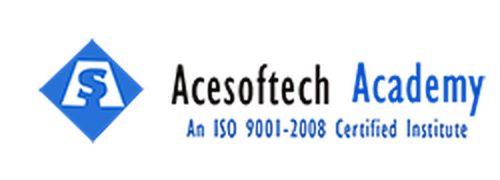Starting a journey into web development can feel overwhelming, especially with so many tools, frameworks, and programming languages evolving every year. But once you understand the fundamentals, this field becomes one of the most exciting and rewarding career paths. Whether you’re exploring the web development course in India options or trying to find the best web development training in Kolkata, the digital world is ready to welcome you with endless opportunities and creative freedom.
In today’s fast-moving tech ecosystem, websites are more than just online pages — they are experiences, brands, stories, and businesses. Learning how to create them gives you the power to shape how people interact with information. And the best part? Anyone can learn full stack web development with consistent practice and a solid roadmap.
As a beginner, your journey will involve mastering HTML, CSS, JavaScript, frameworks like React, backend technologies like Node.js, and databases such as MongoDB. You’ll also dive into tools that professional developers use daily — version control, deployment platforms, UI libraries, and modern styling systems.
This blog will guide you through essential concepts, updated learning paths, and real-world insights that will help you build confidence. From frontend and backend development tutorials to understanding state management, Next.js, cookies, UI frameworks, and deployment, you’re about to explore everything that transforms a beginner into a skilled developer.
Before you begin, remember one thing: Every expert was once a beginner — and your journey starts now.
Mastering State Management with Redux and Context API
One of the biggest challenges you’ll encounter while learning modern web development is managing state efficiently. In applications where components share or update data frequently, managing state becomes essential for performance and clarity.
Redux is among the most popular tools for handling global states. It ensures predictable behavior, making debugging and scaling easy. When you learn full stack web development, Redux becomes a vital part of your skill set, especially if you’re preparing for JavaScript and React developer training.
Context API is a simpler alternative to Redux and is built into React. It helps you avoid prop-drilling and allows components to access shared data easily. Both Redux and Context API will appear frequently during your frontend and backend development tutorial journey.
Working with Cookies and localStorage
Understanding browser storage is crucial for building secure and user-friendly web applications. Cookies store small data pieces and are often used for login sessions or preferences. Meanwhile, localStorage can hold up to 5MB of data and is perfect for saving lightweight information like theme preferences, cart items, or user settings.
When taking a web development course in India, these storage methods will be introduced early because they are foundational skills every developer must master.
⚡ Explore the Power of Next.js and Server-Side Rendering
Next.js is one of the most popular frameworks for React developers. It offers server-side rendering (SSR), static site generation (SSG), and built-in routing. These features improve SEO, performance, and scalability.
If you’re undergoing the best web development training in Kolkata, Next.js will help you build professional-level applications faster, while SSR ensures your websites load quickly and rank better on search engines.
Use Tailwind CSS to Create Beautiful UI Faster
Tailwind CSS has become the go-to framework for developers who want speed, consistency, and creative freedom. Instead of writing long CSS files, Tailwind offers utility classes that help you style your UI directly in the HTML/JSX.
This is a must-learn skill when you learn full stack web development, especially when creating dashboards, admin panels, landing pages, and responsive websites.
Build and Deploy Real-World Full-Stack Applications
Real-world projects require you to combine frontend and backend seamlessly. This includes API handling, authentication, payment gateways, dashboards, admin panels, and user management systems.
A strong frontend and backend development tutorial will guide you in building MERN (MongoDB, Express, React, Node.js) or MEAN stack apps. Developing full-stack apps prepares you for real job roles and freelance opportunities.
Create Admin Panels and User Dashboards
Admin dashboards are a core part of modern business applications, used for analytics, monitoring, user roles, and decision-making. You’ll learn to build dashboards using React, Next.js, Tailwind, Material UI, Redux, and database integrations.
This is one of the most essential skills for those joining a JavaScript and React developer training program.
Handle File Uploads and Media in Web Apps
From user profile images to product photos and documents, file uploads are required in nearly every web application. You’ll learn:
Using multer in Node.js
Cloud storage options like Cloudinary
Upload progress indicators in React
Handling validation and security
These are must-have skills when you learn full stack web development.
Style Like a Pro Using Modern CSS Techniques
Modern UI heavily depends on creative styling. CSS properties like flexbox, grid, animations, transitions, and pseudo-classes bring websites to life.
You’ll also explore:
SCSS
BEM methodology
Responsive breakpoints
Dark/light mode switching
These techniques are often covered in the best web development training in Kolkata programs.
️ Database Integration for Dynamic Content
Dynamic websites rely on databases to store, edit, and manage content. You will learn:
SQL databases like MySQL
NoSQL databases like MongoDB
ORM tools like Prisma and Mongoose
Database integration is one of the most powerful parts of a frontend and backend development tutorial roadmap.
Deploying Apps with Netlify, Vercel, and Heroku
Deployment is the final step that makes your project accessible to the world. Platforms like Vercel and Netlify offer free hosting for frontend applications, while Heroku or Render host backend services.
This is an essential part of any web development course in India, as you must know how to take your project live.
Outbound Link (Credible Source)
To understand how the web itself works at a fundamental level, you can read more about the World Wide Web on Wikipedia:
https://en.wikipedia.org/wiki/World_Wide_Web
⭐ Summary
Web development opens countless opportunities for creativity, innovation, and high-salary careers. Whether you’re preparing for the best web development training in Kolkata or starting a web development course in India, the journey is exciting and filled with learning.
Throughout this guide, you explored essential concepts that help you learn full stack web development, including state management, Next.js, databases, UI styling, storage, deployment, dashboards, and more. These skills form the foundation of becoming a professional developer and mastering JavaScript and React developer training.
Your journey begins today — take the first step confidently and consistently.

